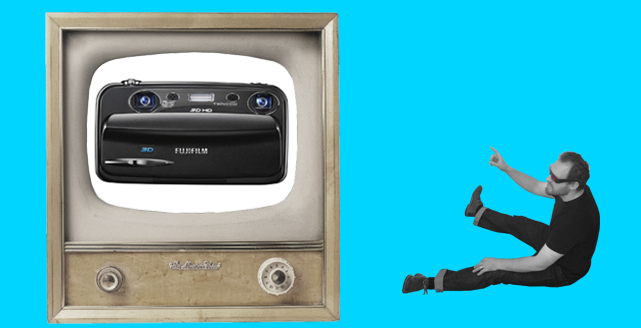Let’s start with the basics, what is Sandde?
Sandde stands for Stereoscopic Animation Drawing Device so there’s two ‘d’s and one ‘e’ – a lot of people misspell the name. Essentially, instead of drawing on a two dimensional surface, like on a piece of paper, we draw in three dimensional space. SANDDE is also an animation tool, as it has some motion capabilities.
How long have people been using Sandde?
People have been using the software for about 10 years. Currently, it is more available for students. As it is a Canadian invention, the first place you’ll find Sandde is Canadian institutions.
Who would use Sandde?
People who use Sandde are between the practices of drawing and sculpture. They want a different look than what you get using computer graphics in Maya or Softimage. Those programs use math but Sandde is closer to drawing. Drawn animation was often referred to as 2 dimensional until Sandde. Now people are baffled because we’re doing something between 2 and 3D. If you drawn something computer generated, there is a perfected quality that seems cold. When you see something drawn with Sandde, the imperfections make the image look more like a drawing.
GRAND Research Associate Steve Oldridge working with Sandde
So Sandde doesn’t produce perfect-polished images?
While other computer programs are more about producing shapes and surfaces, Sandde is more about lines – edges of things. For example, if I want to draw a face, I can produce the image with 4 lines but in CG you’d have to spend more time working on producing surfaces, forcing imperfections, to get things looking natural. With those 4 lines in Sandde, we get down to the essence of cartooning. If you draw a circle with a line and 2 dots and show it to a new born baby, the child will smile at the image. We are hard-wired to take minimal amounts of information and interpret this info as a face or any other kind of image.
What are the components of Sandde?
The system is comprised of an input device and the Sandde software. The one being used here at Emily Carr is a cam wand [a device with 4 LEDs you can move around in front of a webcam]. The computer extrapolates where you’re holding the wand in 3 dimensional space, interprets that location, and enables the artist to draw. I have been consulting with graduate students at Emily Carr who want to use the motion capture studio as an input device for Sandde. The motion capture stage enables people to draw with their entire body. Usually, the artist needs an unusual input device because you need something that can draw width, height, and depth.
GRAND Research Associate Steve Oldridge working with Sandde
Traditionally speaking, drawing requires 2 physical objects to interact with to create an image. With Sandde, you seem to be drawing pictures in the air. How does it feel?
You don’t have the pressure of the page to orient yourself so there’s a period of two weeks when you relearn your eye-hand coordination. If you’re proficient at drawing, it can be disheartening to pick up a wand and move it around and produce drawings like you did in kindergarten. After a couple weeks, you start to realize, you don’t need a surface and you start drawing the way you used to. Your style comes back. I can look at an artist’s portfolio before they use Sandde and know what style they will have. It turns out that style is not dimensionally dependent. Style is inside of you and linked to your personality. Whenever human beings encounter a new tool, we find a new way to look at ourselves.
Can you talk about how Sandde crosses over from research institutions into industry?
Sandde was developed by IMAX and I was one of two animators that made Paint Misbehaving – the first 3D film to screen in IMAX theatres. Since then, we’ve made a few films with Sandde at the National Film Board. I did Falling In Love Again, which was very successful as a 2D film in 2003. At that time, 3D theatres were scarce. Apart from IMAX, there wasn’t a lot of opportunity to see 3D content. Now there is a proliferation of 3D monitors, TVs, gaming consoles, and theatres investing in projection equipment. The Wobble Incident was purchased by Sony and comes with the Playstation. At the moment, the amount of good 3D content is limited so experimental short films are being supported by industry.
So you see Sandde sticking around long-term?
Yes. There’s been a lot of development over the last year. Janro Imaging has invested a lot into improving the system. It’s great that Emily Carr has fostered cooperation between industry and academics. In the Stereoscopic 3D Centre, there is a creative back-and-forth between sectors. Good things will come from Emily Carr playing around with tools and for companies to get feedback from artists who are using their tools. In this environment, artists can influence the development of these tools. Sometimes people think we are helpless in the face of technology. In an R&D situation like the S3D Centre, we can be part of the process of developing tools. Technology isn’t just science; it’s a relationship between art and science.



